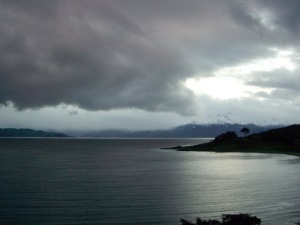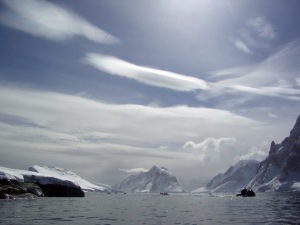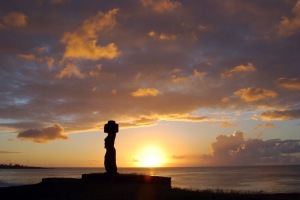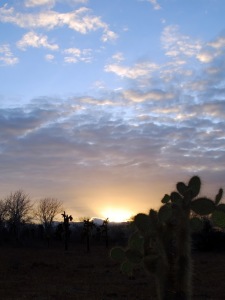 It takes a while to know why one goes where one goes and what impact it has had on a life.
It takes a while to know why one goes where one goes and what impact it has had on a life.
When I went to Jerusalem for the first time about ten years ago, I just knew I was pulled there by some unknown need, although I did n0t know the need, and I’m willing to go with the flow when it takes me to spiritual valleys and highs, which Jerusalem did. It put cinematic images, truths as well as questions, in the imagination that augment my reading the gospel or studying the Bible. (I was told shepherds were not watching over their flock by night at Christmas – they were huddled in caves with their flocks to keep warm. It was winter.) And although I thought it corny at the time, there is something in saying I walked where Jesus walked, carried a wooden cross down the Via Dolorosa, knelt where He knelt at Golgotha, touched the birth spot – now a marble shrine – where Jesus was supposed to have arrived in the flesh, drank the wines of Cana and stepped in the River Jordan, which has certainly change it’s H20 quality in two thousand years. But don’t we continue to breathe the same air that has always surrounded earth? Don’t we inhale today what Jesus exhaled on the cross and the white dust that covered him when He spent forty nights attended only by the “beechos” of the desert? We all need to go to the West Wall, known as the Wailing Wall, to leave a prayer for God, and we all need to crawl through the elaborate marble tomb to see that it is empty. Are these proofs? They speak faith.

Although I lived twenty years in Uruguay, I never took the opportunity to see all the travel truffles of South America. When I traveled in those years, it usually meant I had to fly north to visit family in the states, or look at race horses, or do church-related training in England, or I was judging WAFA flower extravaganzas in both hemispheres of the world. So this rumbling through ecologically fragile spots of South America was something from the heart. I had been in the coldest part of the Northern Hemisphere, to remote Greenland and quirky, fun, stylish Iceland in June en route to a poetry seminar in St. Petersburg, Russia. But nothing prepared me for such nearness to God as I felt in Antarctica and Easter Island.

As I organize thousands of photographs from the Atacama-Antarctica-Easter Island-Galapagos-Rain Forest excursion, I realized what most impressed me were the skies. Every squirm in my seat – be it on a Zodiac, on a kayak, on the black or red sand shores, on the black volcanic rock, on the balcony of my state room, I was overwhelmed by the beauty of the sky. It didn’t matter if a scavenger scaur, a checkered Cape Petrel, a snow white petrel, a glorious sooty albatross or a red chested sea gull flew through the vision. The clouds, the pure blue color, the white hazes, the gray moods, all pieced together God’s art with such genius that there wasn’t enough film on my camera to capture it all. In the sky is always hope. In the sky is a destiny to which we are blind. In the sky weather gives us signs and mood changes which we don’t really understand. The sky is always the cathedral of faith that gives me the courage to keep on. If there is a rainbow in it, I take that as God’s sign of confidence, to keep on doing what I’m doing. I saw many rainbows.

And the sky still preaches now that I’m home and daily watch the orange sun or harvest moon slide below the horizon across the Mississippi River and Arkansas. But nothing is a clear and pure as the skies of Antarctica and of Easter Island. In Antarctica it’s painted with ice bergs and white foamed mountains often reflected in a calm sea broken only by porpoising penguins or air-blowing Orcas. In Easter Island it was the sharp blue of being on a dot in the middle of the Pacific Ocean, miles from anything, where clouds had no worries like pollution or mal-formations or human excrement and where for most of its history, the sky is still the weather channel. The desert skies of Atacama were dramatic, colorful and sometimes invaded by a pink flamingo. The Ecuadoran rain forest skies were foggy, misty words in a green love song chortled by every kind of bird and very loud cicadas.
 Of course, when you encounter your first Orca in the wild, or the first seal lounging on an ice floe, or the first penguin leaping off the snow bank into the sea, or the first sea turtle or over-friendly seal swimming beside you in the deep – and all you have are goggles and a wetsuit – or the first ugly iguana at enough distance you feel escape is possible, or you watch the first giant turtle pulling blades of grass and looking up with you at moist sad eyes – when you see all these things initially, you take a thousand photos. But in the end, you have walked through so many colonies of penguins – be they Gentoos, Chinstraps, Adelie, Emperor, Galapagos or King – and almost fallen dodging red crabs and the long gray tails of iguanas camouflaged by the black volcanic rock they hug, and you’ve stood freezing on deck enough times to watch whales that your zoom will not get you close to, you begin to say, I’ll sit this one out. But you still rev up and go. You may have seen more than your share, but you learn in general, most of them stink. A lot of penguin health and nourishment is revealed in reading the colors of their poop. Same for seals which often bloody the snow with fight wounds. Rock cliffs are frosted in white bird excrement, especially where the bluefooted boobies and cormorants hang out and life goes on.
Of course, when you encounter your first Orca in the wild, or the first seal lounging on an ice floe, or the first penguin leaping off the snow bank into the sea, or the first sea turtle or over-friendly seal swimming beside you in the deep – and all you have are goggles and a wetsuit – or the first ugly iguana at enough distance you feel escape is possible, or you watch the first giant turtle pulling blades of grass and looking up with you at moist sad eyes – when you see all these things initially, you take a thousand photos. But in the end, you have walked through so many colonies of penguins – be they Gentoos, Chinstraps, Adelie, Emperor, Galapagos or King – and almost fallen dodging red crabs and the long gray tails of iguanas camouflaged by the black volcanic rock they hug, and you’ve stood freezing on deck enough times to watch whales that your zoom will not get you close to, you begin to say, I’ll sit this one out. But you still rev up and go. You may have seen more than your share, but you learn in general, most of them stink. A lot of penguin health and nourishment is revealed in reading the colors of their poop. Same for seals which often bloody the snow with fight wounds. Rock cliffs are frosted in white bird excrement, especially where the bluefooted boobies and cormorants hang out and life goes on.

Most exciting about the animals and birds – and you get addicted to looking for them – was the dive bombing of the bluefooted boobies which was so fast I couldn’t catch it on film; the sad humor of a male penguin hiking up the highest hill to retrieve a single rock, sliding back down with it in his beak, taking it to his mate to add the rock to the nest for their eggs, only to drop it and have it stolen by a pirate penguin; and the male land-locked cormorant diligently bringing dried leaves and tiny branches to his wife as she spruces up their wreath nest, only to have her to stretch her neck upwards and squawk as if she wasn’t satisfied. I was amazed by huge butterflies that looked like monsters and tiny Chinese plants hanging with white balls that looked like perfect chicken eggs. I saw the tiniest orchid in the world and discovered that helaconia in the Ecuadoran rain forest are as common as daffodils in Memphis springtime.
I suspect I’ll never forget the drama of the Endeavor’s effort to rescue the passengers from the sinking little red Explorer ship. And a subsequent drama when a naturalist with a heart dug with boot and shovel – with lots of help from the rest of us – to get a few seals out of a hole they had sunk into. We knew nature had to take her course and eventually, as summer was coming, the snow and ice would melt and there would be an escape route for the seals. But, who would sleep at night knowing that might not happen? Did we do wrong?
I learned to kayak on the Antarctic seas and snorkel on the shores of Galapagos where your companions are seals, turtles, and, ugh, iguanas. I swam not only in the frozen waters of Deception Cove in Antarctica but among light blue fish and serpents in shallow warm bays of Easter Island and took advantage of daily stretches offered as the Endeavor rocked and rolled through the Drake Passage, a gold mask facial in Ushuaia, Argentina, and a chocolate bath and facial in the North Andes of Ecuador. I climbed to the top of a crater on Easter Island and almost got blown away by the wind at the top, up to the peak of a 400 meter mini-mountain of snow and ice in Antarctica, then trekked through a forest of cactus trees as the sun set (and I couldn’t see) in Galapagos and ran up the man made stairs across the dust and rocks of another “cerro” to touch the lighthouse at the top.
The terrain and the views were never the same anywhere, nor was the food. I’ll spare you from that for now. New friends and guide advocates you add to your email list, hope to travel again together in the future, meanwhile we share photographs and memories. Writing the daily blog made me feel connected to a spirit as I shared the experience of these adventures with family and friends. But I figured out happy eco-travel is all about the gear. Dress right, in layers with light load and you can do anything. Avoid overpacking, as I did, but whatever you do, don’t forget your walking stick. It’s like having a third leg.

